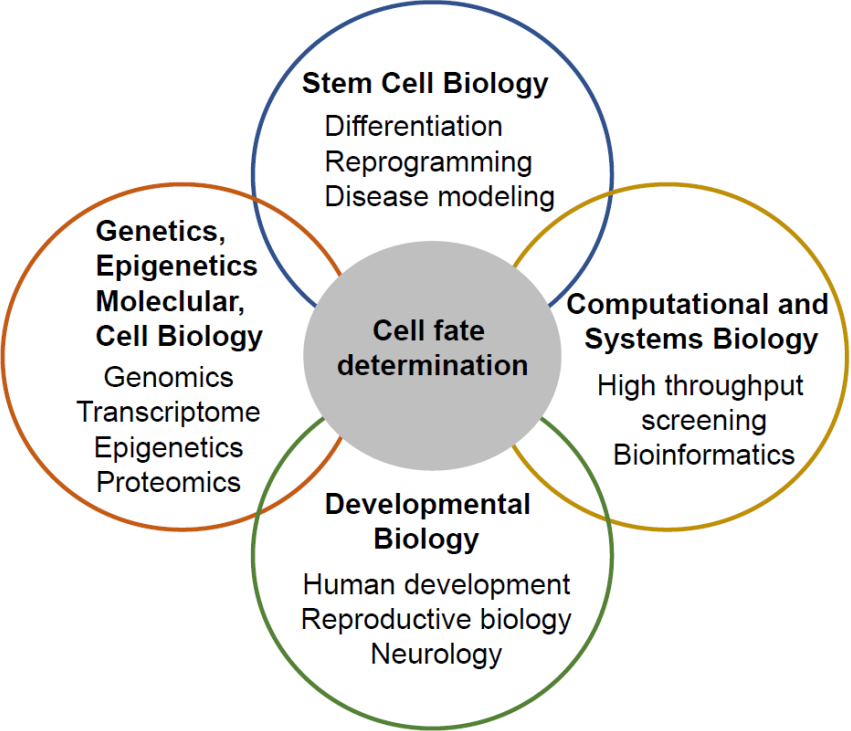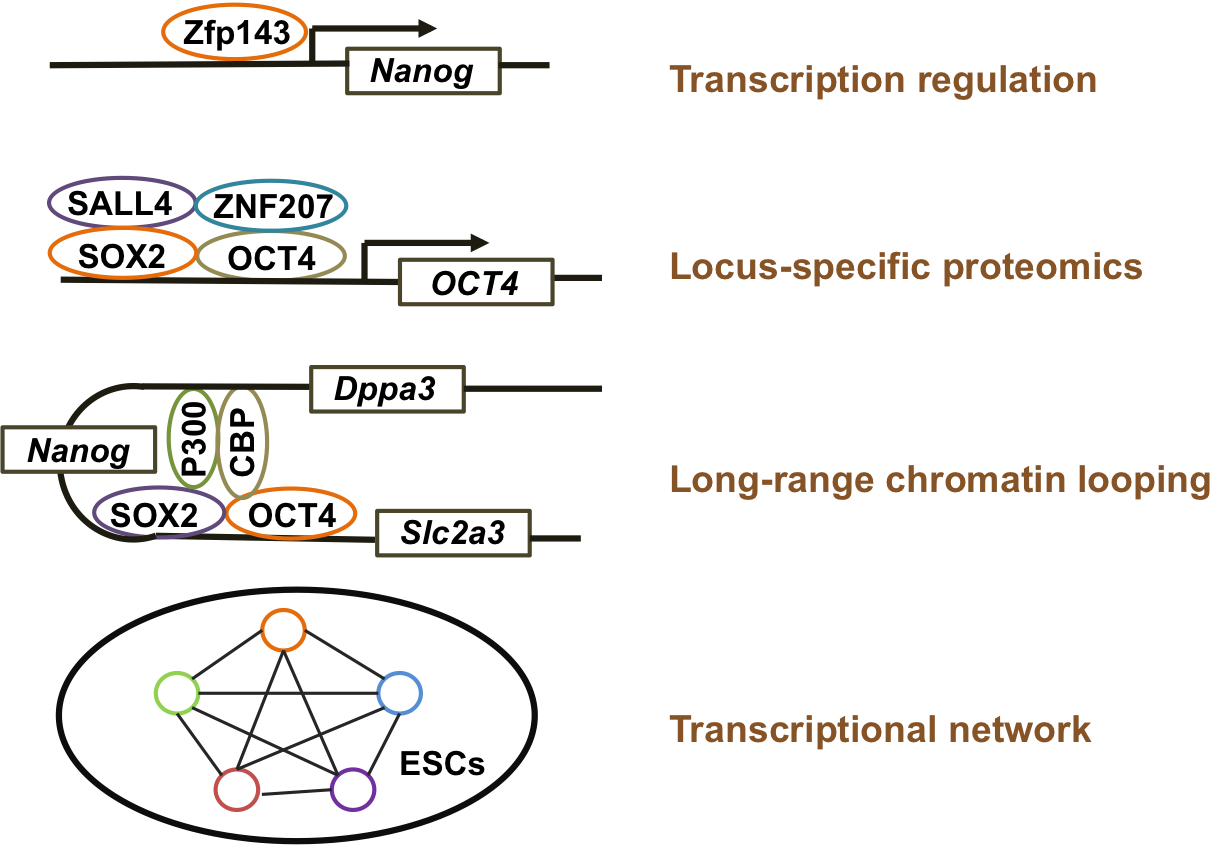we have a long-standing interest in understanding how cell fate decisions are coordinated in early human development and how human disease, especially that which is characterized as sporadic, may be manifest during human development.
the overall goal of our research is to fill the fundamental knowledge void in human development, at least in part, by dissecting the intrinsic transcriptional network that controls the identity of cells; and use the gained knowledge to guide the genesis of various types of cells to restore the function that have been lost due to disease or injury. We expect to establish a premiere human-genome based model to study human disease and develop novel stem cell-based therapies.

1) Multidisciplinary : we combine stem cell biology, systems and computational biology, developmental biology and genetics to specifically probe fundamentals of human development and derive novel therapies for human disease;
2) Innovative: we develop novel tools and approaches to facilitate the detailed analysis and manipulation of specific cells or patient-specific samples and provide novel insights into the fundamental cellular and molecular mechanisms underlying human development and disease.
3) Translational: we are dedicated to develop stem cell-based in vitro system to model human disease, screen for potential drug molecules and derive novel patient-specific therapies.
Human germ cells are unique and responsible for passing the DNA of one generation to the next. Defects in germ cell development are a common cause of human infertility that afflicts 10-15% of couples. However, at least in part due to a lack of models of human germ cell development, most of the underlying cellular and molecular correlates of infertility remain unknown. We would like to apply multidisciplinary tools to probe the fundamental molecular mechanisms of human primordial germ cells (hPGCs) specification with a focus on the role of transcription factors that function in a network to mediate cell fate. Furthermore, we aim to use the knowledge gained to achieve in vitro gametogenesis. We hope that the discoveries from our lab could change the lives for couples who suffer from germline defects due to genetic disorder or medical injury and children who suffer from cancer.

Human pluripotent stem cells differentiated into human primodial germ cells after xenotransplantation into mouse testis. GFP(human cells)/DAZL/DAPI.
Pluripotent stem cells hold great promise for regenerative medicine because they can proliferate indefinitely (self-renewal) and differentiate into various cell types (pluripotency). We have been always interested in how stem cells maintain self-renewal and pluripotency and how we can use the knowledge to direct stem cell differentiation for regenerative medicine. Currently, we focus on dissecting the intrinsic transcriptional network that is specific to pluripotent stem cells. Through analyzing the function of essential transcription factors and their interactions, we hope to identify novel molecular mechanisms for the maintenance of pluripotency and instruct directed differentiation. Our research would provide novel insight for application of stem cells for cell replacement therapy.

Parkinson’s Disease (PD) is a common neurodegenerative disorder that is associated with the gradual loss of dopaminergic (DA) neurons in the human midbrain. DA neurons generated from human pluripotent stem cells (hPSCs) provide an effective method of faithfully modeling PD in vitro and have the potential to assist in identifying and generating novel cell replacement treatments for PD patients. We are interested in human DA neuron development, disease modeling, drug screening, and potential development of cell replacement therapies. With all the technical platforms and potential collaborations, we would like to expand our research to the other neurodegenerative diseases as well.

Pluripotent stem cell derived dopaminergic neurons. βIII-TUBLIN/MAP2/DAPI